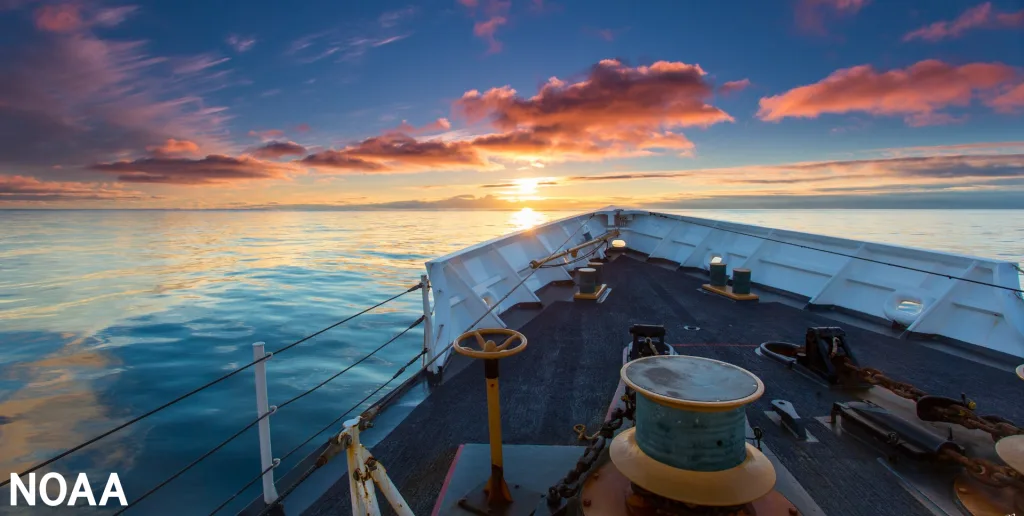Assessing Ocean Acidification in Alaska Fishery Zones
Sustained Observations of Ocean Acidification in Alaska Coastal Seas
Why we care
Coastal regions around Alaska experience some of the most rapid and extensive progressions of ocean acidification (OA) in the United States. Assessments indicate that Alaska coastal communities have a varying degree of vulnerability to OA ranging from moderate to severe. Economically vital fishing regions are the most vulnerable. Sustained monitoring is critical to track the extent and impact of ocean acidification in habitats that are home to sensitive species such as red king crab in the Bering Sea.
What we are doing
This project “rethinks” the coastal Alaskan OA monitoring effort (initiated in 2015) by sampling Alaska waters directly through the annual population survey program of the Alaska Fisheries Science Center (AFSC). This new vision doubles the spatial footprint of Alaska OA observations, increases the time resolution of these observations, and complements shipboard surveys in Alaska. Carbonate chemistry samples will be combined with fisheries population surveys to assess OA in the habitats of keystone organisms in the Bering Sea and Gulf of Alaska.
Benefits of our work
This project enhances our understanding of how the accumulation of anthropogenic carbon dioxide affects the seasonal progression of carbonate carbonate chemistry variables in the Gulf of Alaska. The observations can also be used to validate new OA models developed for the Gulf of Alaska and Bering Sea. Additionally, it can be applied to bioeconomic forecast models of crab and walleye pollock providing insight on how to adapt and build resilience to impacted industries and communities.
Assessing Ocean Acidification in Alaska Fishery Zones Read More »



